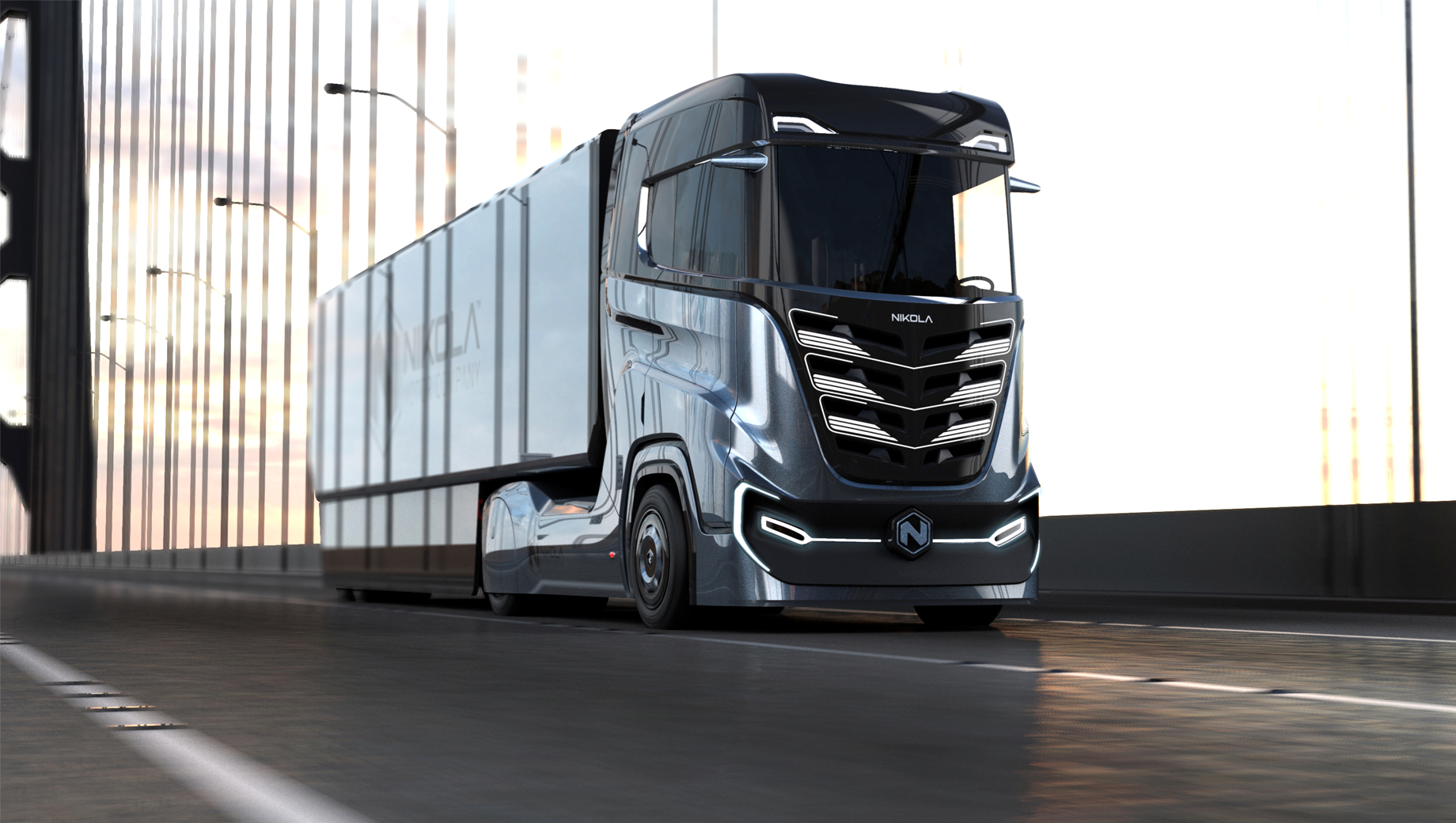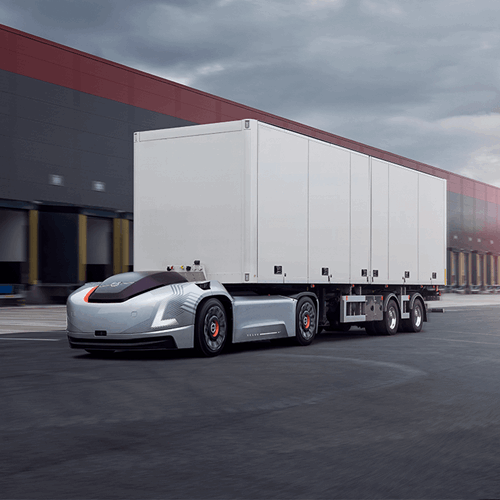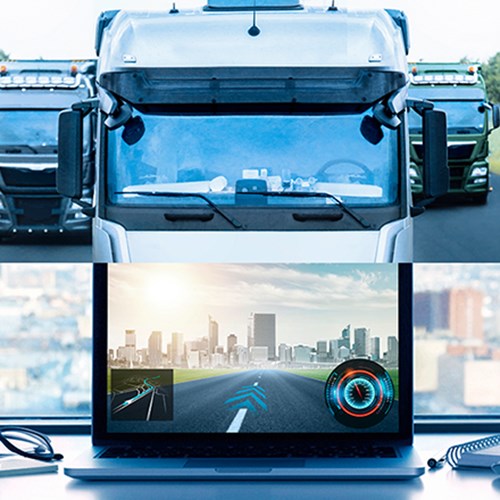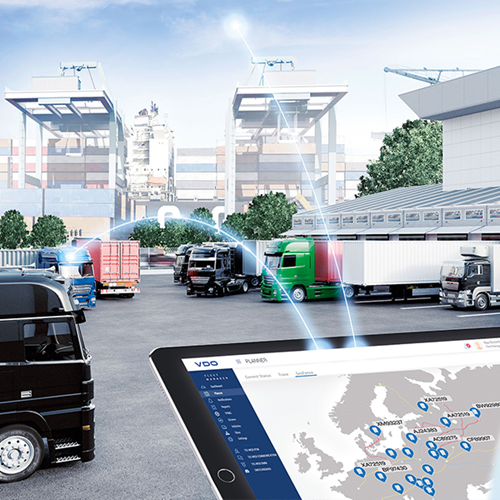Online retail is booming, with a constant stream of logistics centers springing up based around the movement of goods, and demand for forwarding services increasing. The Federal Ministry of Transport and Digital Infrastructure is also continuing to forecast an annual growth rate of more than 3 percent for transport services in Germany. In light of this, topics such as environmental protection, driver shortages and cost and time pressures are becoming all the more important. In addition to ever-improving warehouse management and logistics programs, optimized software will no longer suffice in helping professional fleet management solutions and supply management systems to meet the challenges of the future. Even the truck itself needs to be optimized. Alongside connectivity, it is mainly alternative drives and automation that are shaping the models and studies of truck manufacturers and suppliers. In the first part of this article, we will be reporting on the current situation experienced by truck manufacturers.
Everyone is on board – the first trucks with alternative drive systems have already hit the road
Since the energy turnaround at the latest, electric trucks and those powered by fuel cells have ceased to be merely the stuff of utopian dreams. Manufacturers everywhere are trying to develop partially and fully electric models. After Mercedes-Benz Trucks unveiled an electric truck called "the eActros" – a fully electric heavy-duty truck with a range far more then 200 kilometers – has been given to selected customers for two-year test drives in distribution transport. The model will go to serial production in 2021
The Swedish manufacturer Scania has similar plans and is currently launching both an electric P and L model. With a range of MAN250 km in the heavy-duty version, daily distribution transport should be possible without intermediate loading.
The electrically powered truck models of the group's sister company MAN, which have been on the road in the conurbations of Austria since 2018, cover a distance of around 190 km. Since 2019, the electric 26-tonne eTGM has been coming off the production line in a small series
Dutch supermarket chain Jumbo recently also commissioned its first electric truck with the CF Electric from DAF Trucks. The vehicle from subsidiary Paccar has a range of around 100 kilometers and was developed for transporting loads of up to 37 metric tons by road in urban areas.
Renault Trucks is offering with the Renault Trucks D Z.E. an electric commercial vehicle especially for high-energy, temperature-controlled transport of up to 16 metric tons in urban areas. The range of this truck is expected to reach 300 kilometers. For the waste management sector, there is also a 26-tonne model with a range of up to 120 km.
Volvo Trucks is pursuing a similar concept with the more compact FL Electric and the heavier FE Electric. Some of these all-electric vehicles were already delivered in 2019 to the waste disposal company Renova and the logistics provider DB Schenker. The electric Swede has a range of 200 kilometres.
Despite the pioneering achievement, the electric trucks remain an option for short distances only in distribution transport, as their ranges are still too limited. Their use for long journeys is likely to be delayed given the current state of battery technology. The limited ranges are the reason that fleet operators are still largely critical of the conversion to electric fleets. Elon Musk, of all people, would now like to dispel their concerns. With arguably the most spectacular development from Tesla, the Tesla Semi, it will be possible to cover longer journeys, too. The basic version of the Tesla Megacharger is set to have a range of 480 kilometers. According to the company, the premium version will even manage more than 800 kilometers. Whether Tesla is bringing another “game changer” in the next year to the market remains to be seen.
There is plenty of life left in fuel cells
Concepts for trucks powered by fuel cells are still on the table. In addition to being emissions-free in terms of nitrogen oxides, CO2 and particulate matter, the high system efficiency of fuel cells makes them an attractive option for use in the long-distance transport of goods. A 2017 study by the Fraunhofer Institute, commissioned by the Federal Ministry of Transport and Digital Infrastructure, entitled Fuel Cell Trucks: Critical Development Barriers, Research Needs and Market Potential, nevertheless drew attention to a few obstacles that the technology still needs to overcome. At Hyundai and Toyota, they seem to already be one step ahead. The Korean-based company wants to test a fuel cell truck fleet of 1,000 vehicles in Switzerland over a period of five years. The Hyundai fuel cell electric truck is expected to be able to travel around 400 kilometers. Since April 2017, Toyota has also been testing fuel cell trucks in the USA. Together with US truck company Kenworth, a new generation is currently in development and is set to be able to travel around 480 kilometers on a single tank. Even more promising are the statements made by US start-up Nikola Motor. The company announced that it will be launching a hydrogen truck on the European market in 2022 in the form of the Nikola Tre, which will have a remarkable range of 1,200 kilometers.
Putting hybrid solutions to the test
The e-Highway project could present a practical solution for the future. Overhead wiring for hybrid trucks has been installed and tested on the first test routes on the A1 in Schleswig-Holstein, the A5 in southern Hesse and the B462 in Baden-Württemberg. Pantographs supply electricity to the truck’s electric motor and charge the battery during the journey. Scania had built 15 vehicles for this purpose. Sensors on the truck detect the overhead wiring and automatically connect the vehicle to or disconnect it from the wiring without any change in speed. Field testing for the ELISA (electrified, innovative heavy traffic on the autobahn) project is set to begin once the tests have been completed and is expected to last until 2022. The whole thing looks like an electric locomotive but, as long as there is no other solution, the comparatively uncomplicated – if, from a public perspective, not exactly cheap – idea could well be implemented.
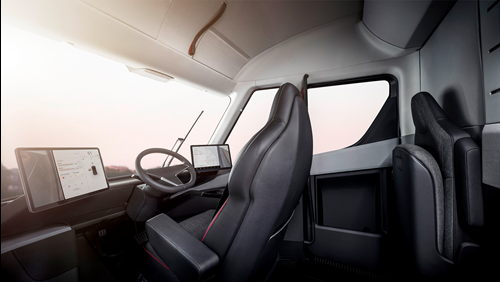
Source: teslamotorsinc.sharepoint.com
Regardless of the solution ultimately adopted in the future, the technical progress of electric vehicles is by no means limited to the passenger car segment. However, with their first models and test runs, the major truck manufacturers are also providing suppliers with some persuasive evidence that they have recognized the signs of the times. The day when electric and hybrid vehicles supersede pure combustion engines is likely not too far away. Incidentally, Continental recently announced that a new type of tire that is ideally suited to the changing requirements of electric commercial vehicles has reached market readiness.
In part 2 of our “The Future of the Truck” series, we will be reporting on the status and development of self-driving truck concepts.
